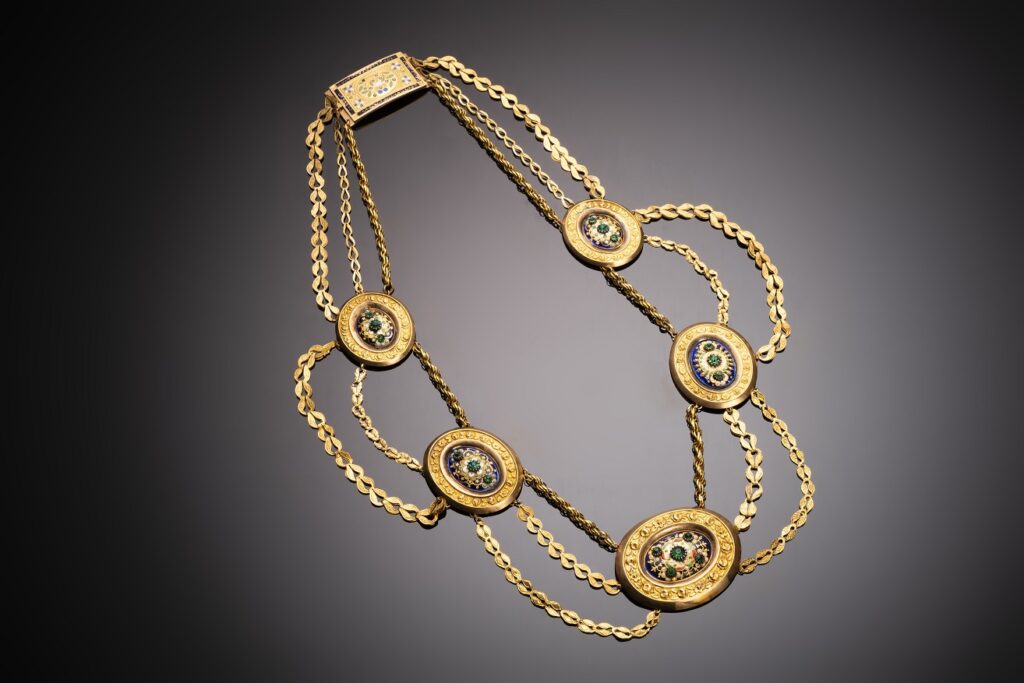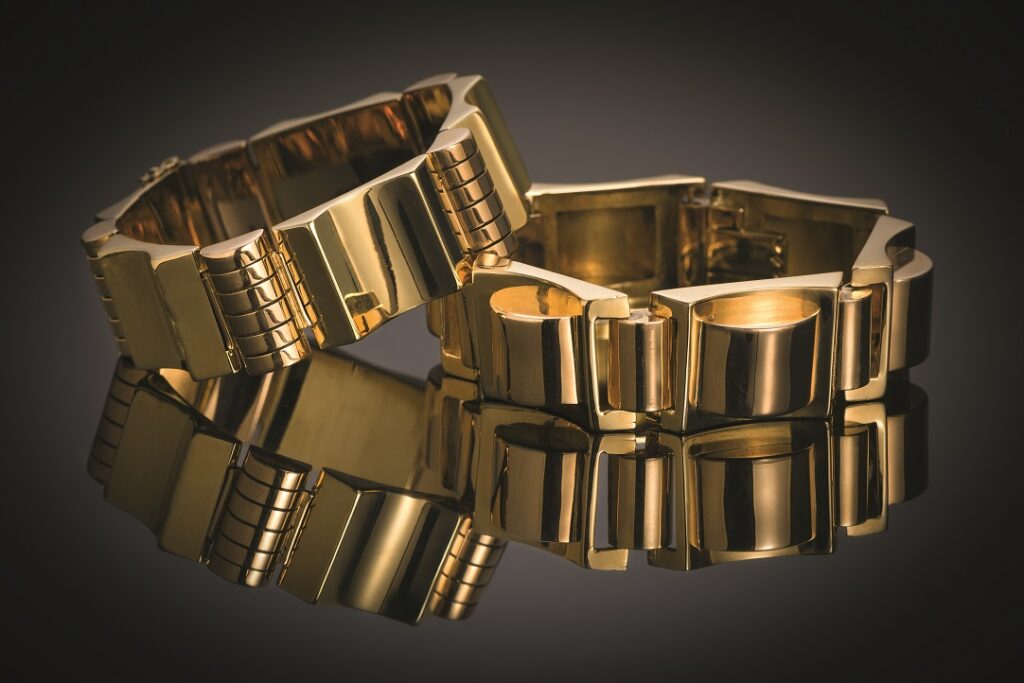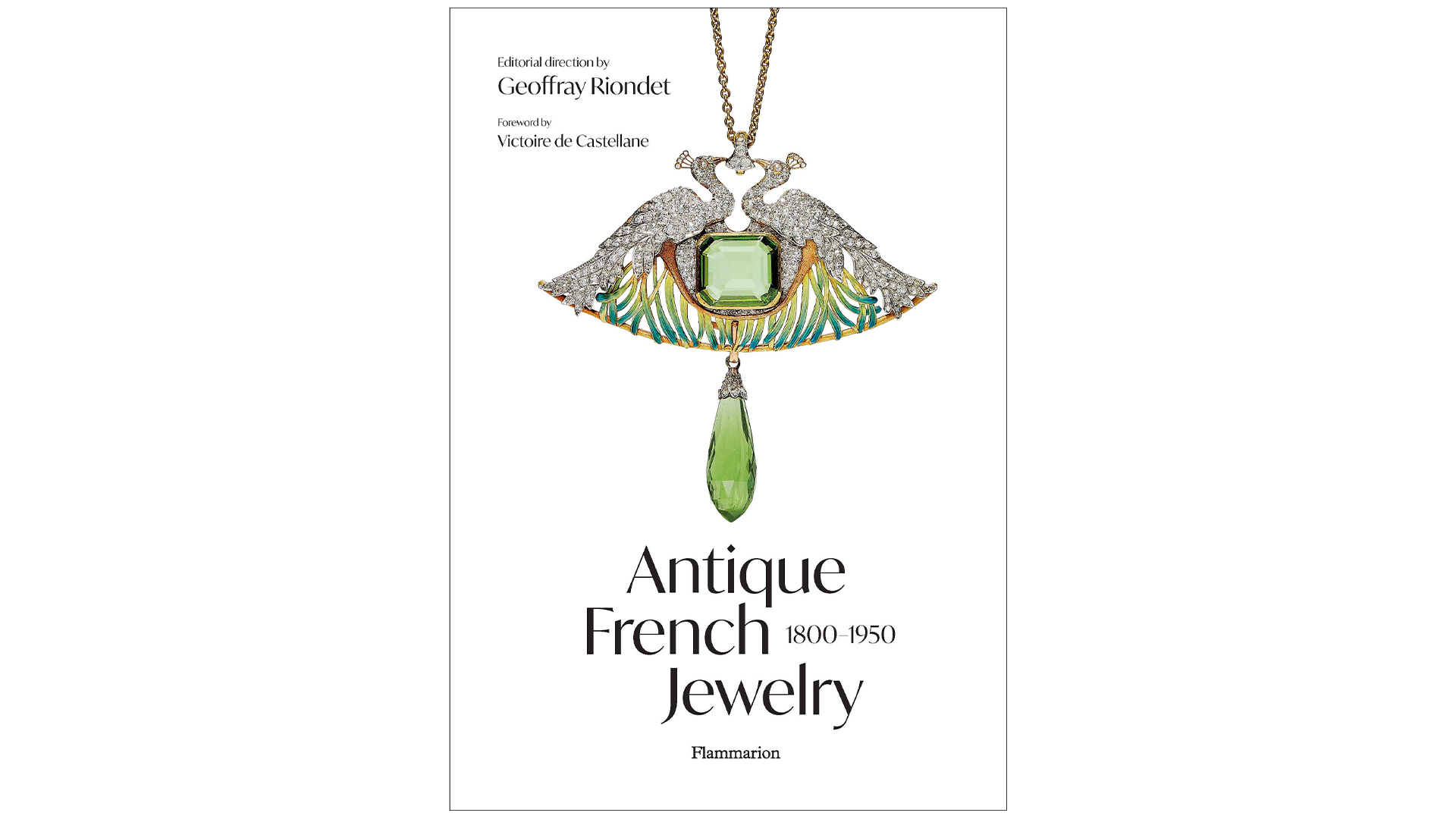Every so often a book comes out that really explains jewelry history and the materials used in its fabrication, that is what “Antique French Jewelry: 1800-1950”, recently published by Flammarion, does. The book takes the reader on a journey through time and French history as told by changing jewelry styles in a fun, easy read. Authored by Geoffray Riondet, who runs Maison Riondet, in Lyons, France, the book chronicles jewelry made in France from 1800 to 1950. Riondet is an antique jewelry specialist, gemologist, appraiser and teacher at the Institut National de Gemmologie (French National Institute of Gemology, ING). He also drew upon the expertise of other professors from ING including Anne Laurent, Loïc Lescuyer, Gérard Panczer and Brigitte Serre-Bourt. Celebrated jewelry designer and artistic director of Dior Joaillerie, Victoire de Castellane, wrote the foreword.
This book gives a detailed and organized look at French jewelry over a 150 year period. It takes the reader through an informative experience that provides a solid background on all aspects of jewelry.
Jewelry History

The book is divided into six chapters, each focusing on a particular area of jewelry making. The first chapter, Jewelry Through Time, examines the social, economic and political situations in France through the 1800s until the mid 1900s. The chapter breaks down different eras and offers context into the history of that time frame and how certain events influenced jewelry making, such as wars which made it difficult to get materials. Jewelry trends and their inspiration are also reviewed including fashions of the time.
The second chapter, Materials, takes a look at precious metals — gold, platinum and silver —their history, characteristics and countries of origin, as well as hallmarks and care instructions. The same chapter also covers the nonprecious base metals that are sometimes used in jewelry production. It goes on to focus on natural materials used in jewelry fabrication including hair, wood and enamel.
Gemstones and Jewels

Chapter three covers gemstones. Riondet notes that only about fifty gemstones are commonly used in jewelry and of those twenty-one are traditionally used in antique jewelry. He then goes on to review each of those twenty-one gems according to its characteristics, history, color, care and provenance.
From there, the next chapter, Main Types of Jewelry, discusses rings, brooches, necklaces, pendants, bracelets and head ornaments. He describes what each type of jewelry is and what the styles were for each period between 1800 and 1950.
Famous Makers

The fifth chapter takes a look at Houses, Artists and Designers. This section is an easy alphabetized listing of the major French jewelry houses and designers during the 150 years that the book covers. A brief history of everyone from Belperron to Fontenay and Lacloche to Vever are covered including their contributions to the world of jewelry.
The final chapter Practical Advice: Appraisal and Valuation, Buying, Selling and Insurance, explains what each of these services is, why it may be needed and what to look for when you are using these services.
Finally, the book concludes with an extensive bibliography so readers can do more of their own independent research. This is a great book for someone who is just starting to learn about jewelry and it’s a quick refresher and easy reference for more experienced jewelry enthusiasts. It’s a useful foundation for any jewelry book library.
Featured image (top of page): Cover, Antique French Jewelry: 1800- 1950, Flammarion©, authored by Geoffray Riondet.
Authored by Amber Michelle
